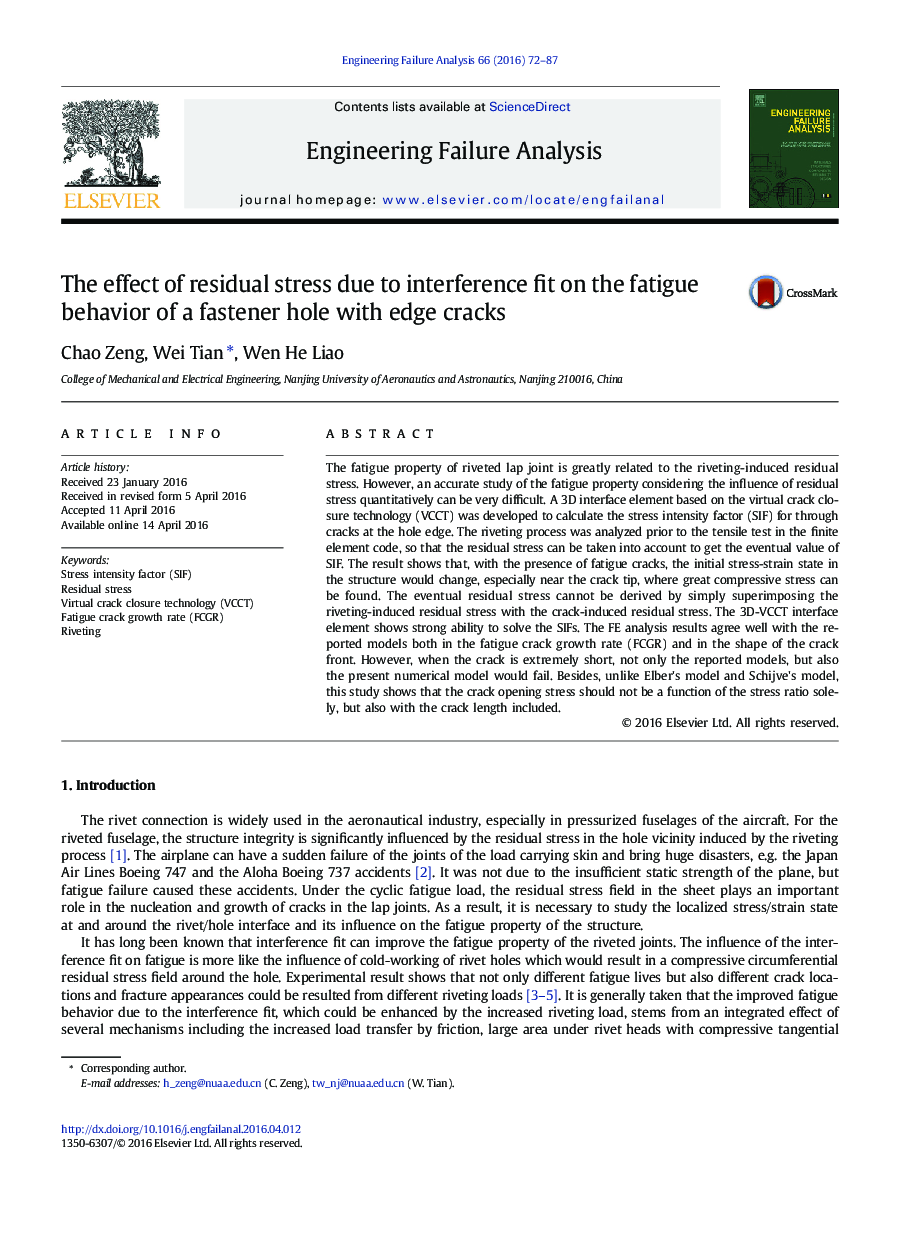| کد مقاله | کد نشریه | سال انتشار | مقاله انگلیسی | نسخه تمام متن |
|---|---|---|---|---|
| 763249 | 1462960 | 2016 | 16 صفحه PDF | دانلود رایگان |
• Improved fatigue property can be achieved by the interference fit between the hole and the rivet.
• The initial stress-strain state would change with the presence of fatigue cracks, especially near the crack tip.
• The 3D-VCCT interface element shows strong ability to calculate the SIFs.
• The crack opening stress should not be a function of the stress ratio solely, but also with the crack length included.
The fatigue property of riveted lap joint is greatly related to the riveting-induced residual stress. However, an accurate study of the fatigue property considering the influence of residual stress quantitatively can be very difficult. A 3D interface element based on the virtual crack closure technology (VCCT) was developed to calculate the stress intensity factor (SIF) for through cracks at the hole edge. The riveting process was analyzed prior to the tensile test in the finite element code, so that the residual stress can be taken into account to get the eventual value of SIF. The result shows that, with the presence of fatigue cracks, the initial stress-strain state in the structure would change, especially near the crack tip, where great compressive stress can be found. The eventual residual stress cannot be derived by simply superimposing the riveting-induced residual stress with the crack-induced residual stress. The 3D-VCCT interface element shows strong ability to solve the SIFs. The FE analysis results agree well with the reported models both in the fatigue crack growth rate (FCGR) and in the shape of the crack front. However, when the crack is extremely short, not only the reported models, but also the present numerical model would fail. Besides, unlike Elber's model and Schijve's model, this study shows that the crack opening stress should not be a function of the stress ratio solely, but also with the crack length included.
Journal: Engineering Failure Analysis - Volume 66, August 2016, Pages 72–87
